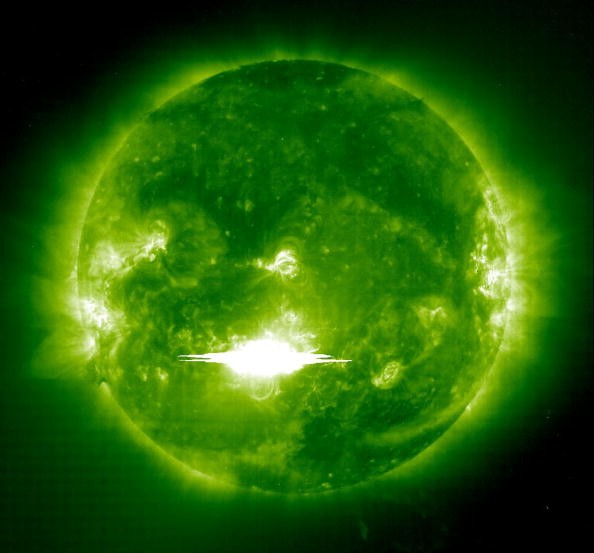Coronal mass ejections from young and violent sun might have warmed up Earth and prepared it for emergence of life nearly 4 billion years ago. These are the findings of a new study conducted by a team of astronomers at NASA.
The study, published May 23, Monday, in the journal Nature Geoscience, explains the phenomenon of "faint young sun paradox." According to this phenomenon, the water on Earth remained in liquid form when the solar system was initially created, even when the sun was 30 percent less powerful than what it appears to be today.
This phenomenon has kept researchers puzzled for years, who kept thinking about the greenhouse gases that kept the Earth warm and the question that how these gases percolated through the planet's atmosphere. Volcanic activity might have produced carbon dioxide around that time, but it would not have been sufficient to make up for 30 percent deficit energy from the sun.
Methane and water vapors are other options that could have trapped heat at that time, however, they are not capable enough. Another option is nitrous oxide, popularly known as the "laughing gas."
Nitrous oxide is 300 times more powerful that carbon dioxide when it comes to the greenhouse gas effect. In fact, 80 percent of the Earth's atmosphere today is molecular nitrogen and it is still not easy to break the bond between the two molecules of nitrogen.
But it was fairly important for the inert gas to break down and interact with other molecules in the atmosphere to make life possible. Keeping this paradox in mind, Vladimir Airapetian, the lead author of the study, went on to examine the effect of solar storms and coronal mass ejections on Earth's atmosphere.
The researchers figured out that the coronal mass ejection from the sun would have penetrated through Earth's weaker magnetic field and led to chemical reactions that tuned nitrogen molecules into hydrogen cyanide and nitrous oxide.
The accumulation of nitrous oxide in the atmosphere prevented water on Earth from freezing and hydrogen cyanide, on the other hand, helped produce amino acids that act as a key chemical building block for life. Based on the study findings, the researchers now suspect that a violent star might be a suitable source for emergence of life.
"And now it becomes really, really interesting,"Airapetian told the Washington Post. With the right temperatures and the right ingredients, "life can start the process of cooking."
The following video explores eruption of coronal mass ejection from sun:



























